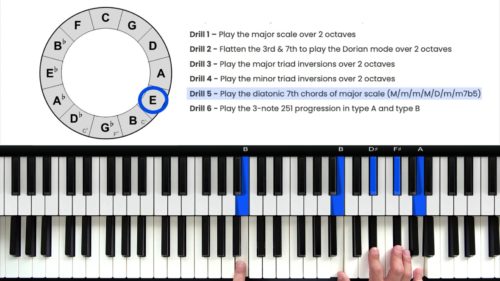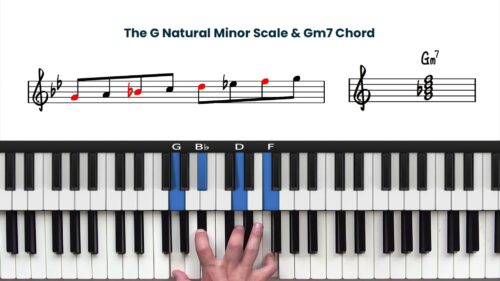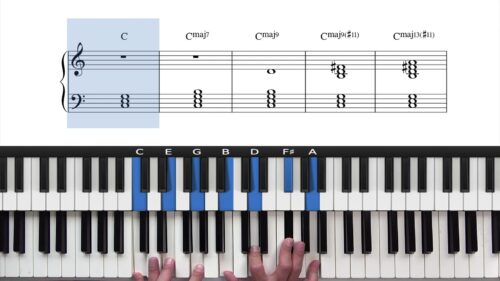Triad & 7th Chord Warm-Up Exercises
Welcome to the 1st lesson in our slow blues harmony and improvisation course in the key of C. This course is designed for students who have already completed the slow blues in F course; which provides a foundational introduction to the slow blues style for beginner blues piano students.
While accessible to all levels of players, this course will move at a slightly faster pace and incorporate more advanced theory and chord substitutions and reharmonisations.
Chord Inversions & Warm Up Drills
In our 1st lesson, we introduce the basic blues form in C and cover a series of drills and exercises to help you become familiar with triad and 7th chord inversions. Mastery of these techniques is essential as they form the foundation for more advanced concepts that we cover in the subsequent lessons.
Basic Blues Chords: The Key Of C
We start by discussing the basic blues form in C, which consists of 3 different chords: the I chord, the IV chord, and the V chord. You’ll learn to invert triads and 7th chords up and down the piano and we also double the top and bottom notes to create bigger sounds.
These exercises are crucial for visualising the many voicing options when playing the slow blues and how the notes of the chords can be spread out or ‘voiced’ across the keyboard.
Left Hand Structures & Configurations
Next, we explore the most important and useful left-hand configurations when playing slow blues piano. This including octaves, shell voicings, and 10th intervals. Understanding these 3 configurations helps you achieve a fuller, richer, and more varied sound when playing solo blues piano.
By the end of this lesson, you will feel comfortable with these foundational exercises, setting the stage for more advanced techniques in future lessons.
Practice Tips
-
Triad and 7th Chord Inversions: Practice inverting triads and seventh chords in both directions across the keyboard. This helps to visualise different voicing possibilities and landing points.
-
Doubling Notes: Double the top and bottom notes of the triads to create a fuller sound. This exercise also strengthens your hand coordination and expands your ability to voice chords creatively and spontaneously.
-
Left Hand Configurations: Alternate between playing octaves, shell voicings, and 10th intervals with your left hand. This variety builds flexibility and a varied left hand accompaniment style in your playing.
-
Smooth Transitions: Focus on smooth transitions between the inversions. Practice moving from one inversion to another whilst keeping a steady pulse and an even tone. Start slowly and gradually increase the tempo.
-
Visualise and Memorise: Spend 5 or 10 minutes of each practice session visualising and memorising the chord shapes and their inversions.






